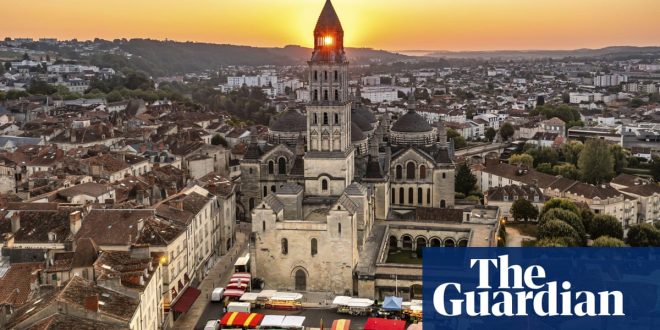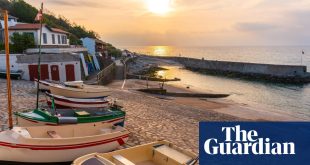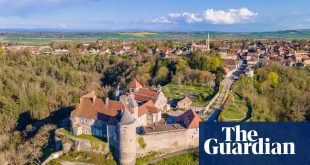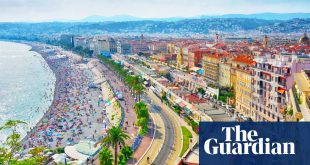It’s always good to be back in Périgueux. Though the administrative capital of the Dordogne lies in one of the French regions best known to British holidaymakers, it manages to remain relatively innocent of tourism. Yet this sleepy flâneur of a town, built on limestone quays above the River Isle, is full of charm.
It is, after all, at the heart of a proudly gastronomic region. Tourism contributes almost a quarter of the department’s income. But call the area by its regional name, Périgord, and the lens shifts. This is the country of truffles and cèpes, walnuts, poultry, confit duck and (like it or not) foie gras; of cheeses and sunflowers; figs and freshwater fish; buttery tartines and heady vin de noix.
The particular joy of French regional cuisine is the way it remains married to its landscape, as a stroll through Périgueux confirms. In Place du Coderc, the market hall is open every morning except Monday. Twice a week, bright stalls cram the square outside. But the vendors tending displays of gleaming fruit, artisanal cheeses and charcuterie aren’t middle-class hipsters but the local farmers who produce this food.
Start to haggle and you’ll realise they’re speaking not only French but something earthier. This is Occitan, ancient language of the Midi (D’oc means of the south), the Pyrenees and parts of north-west Italy. It’s associated with troubadour culture, but also more recently with the transhumance, the annual movement of grazing livestock on the great border mountain ranges. Spoken particularly by older country people, who use it against the vergonha (shame) that French centralisation traditionally inflicted on native speakers, this language is no middle-class fetish either.
In Occitan a stroll, una passejada, is close to the Italian passeggiata, and a reminder of what a public business it is to amble these streets. The object is see and be seen: passersby call morning greetings. Périgueux is an ancient city, rich in Gallo-Roman archaeological sites. Today, the narrow medieval lanes of its town centre are infilled with small-scale 18th- and 19th-century shops, all faced in gleaming limestone.
Running the gamut of local needs, from smart jewellers to stationers in whose dusty windows a few magazines gently fade, they’re a joy to browse, so long as you remember the long afternoon pause, during which everything closes and these streets become as silent as a ghost ship.
Nothing to do then but join everyone else for a long lunch, perhaps at one of the restaurants that line the Place de l’Ancien Hôtel de Ville.
In reality, this apparent somnolence bespeaks a pragmatism about quality of life, which here is shared by everyone, from postal workers to railway labourers, council office clerks to showroom assistants.
Périgueux’s usual symbol is the distinctly unpragmatic silhouette of the Cathedral of St Front. This outsized 19th-century confection of domes and turrets dominates the skyline in much the way the Sacré Coeur does Montmartre. And with good reason: they share an architect, Paul Abadie. Towering above the slow-moving river, the cathedral is also what fills the rearview mirror when you set out into the deep countryside which starts at the edge of the city.
Sitting 75 miles inland from Bordeaux, Périgueux can be reached by train from Paris in about four and a half hours. But there’s no high-speed TGV line to the city – travellers have to change at Limoges. The result is an unusual, old-fashioned urban-rural community and an interdependent sufficiency from which we might learn much as we face the stresses the climate crisis will put on food security and global supply chains.
But perhaps I’m biased. Until Brexit I lived here myself, in a hamlet some 20 miles west of the city. Our home was in the region known as Périgord Noir, which takes its name from the celebrated black truffle, Tuber melanosporum, found locally. There are also Périgord Blanc, for limestone dazzle; Périgord Vert, for general verdure; and Périgord Pourpre, which has wine-growing Bergerac at its heart. In fact, though, greenery and pale limestone characterised our district too.
This is life off the beaten track – not that it lacks either charm or awareness of that charm. For example, a half dozen miles from our old home, along winding roads marked with little white kilometre pegs, stands the chateau that gave the village of Hautefort its name.
Behind ramparts above the main village street, named for the medieval baron-poet Bertran de Born, who founded the castle, is a spacious gravelled forecourt with, falling away on three sides, historic gardens and parkland that lead to a horizon of bright fields interspersed with wooded coverts. In the UK, this palatial monument with 17th-century round towers more fantasy than fortification would be a tourist honeypot. But most of the visitors taking in the rolling vistas of limestone country are French.
French is also the language of the shops and cafes of nearby Excideuil. This confident little market town is built, like Hautefort, on a limestone bluff above a river. Its chateau rebuffed Richard the Lionheart three times; also among the town’s cobbled streets are traces of the Knights Templar, a parish church that dates back to the 10th century, and many handsome 16th-century houses built after the town was made tax-exempt by royal decree in 1482.
But Excideuil is not a museum so much as Périgueux in miniature. Every Thursday the square at the top of town hosts a market where farm-raised poules are sold plucked or unplucked. The sellers might be our old neighbours JP “Pierrot” Journiac and sons, as they – and their dog Jazz – backchat through the hatch of their tiny, home-painted Citroën van. Or at least, as they used to: Pierrot died earlier this year. Today he lies in the village cemetery at Tourtoirac, surrounded by the fields his family have farmed for generations.
Tourtoirac, quieter and smaller in turn than Excideuil, is where, sitting with our dogs outside one of the square’s two cafes, I first entered the world Pierrot came to personify for me. Faded blue window shutters below double-pitched lauze (stone-tiled) roofs, family farms deep in acres of sunflowers, and lost homesteads crumbling back into a landscape of wooded high causse (limestone plateaus), a chair under a fig tree, and dark, flyblown kitchens in which buttery miracles are conjured.
This is where I glimpsed how deeply a shared reliance on countryside unites city, town, village and hamlet. I ended up writing a book about the deep influence such limestone landscapes exert.
Like many of the region’s fortified churches, Tourtoirac’s displays Romanesque carving, a trace of its place on the Santiago pilgrimage route. Fourteen years ago the village installed a son-et-lumière show in recently discovered caves. These historic excitements change local life, but not completely. In our hamlet by the River Auvézère the traditions of modest self-sufficiency remain: a house cow, a drying rack for maize, vegetable gardens, geese in the yard under the walnut trees.
The drying, bottling and distilling all this demanded kept most of our neighbours busy into the light evenings of summer. In winter, we lived by kitchen table gossip, vin de noix and what the postman brought. It wasn’t the Algonquin Hotel. But it was a masterclass in human interdependence – to say nothing of the dogs.
Limestone Country by Fiona Sampson is reissued in paperback this autumn by Little Toller (£12)
 Top Naija News – Nigeria News, Nigerian News & Top Stories Top Naija News – Nigerian Newspapers, Nigerian News. topnaijanews is a daily Nigerian newspaper covering Latest News, Breaking News, Entertainment, Sports, Lifestyle and Politics.
Top Naija News – Nigeria News, Nigerian News & Top Stories Top Naija News – Nigerian Newspapers, Nigerian News. topnaijanews is a daily Nigerian newspaper covering Latest News, Breaking News, Entertainment, Sports, Lifestyle and Politics.




